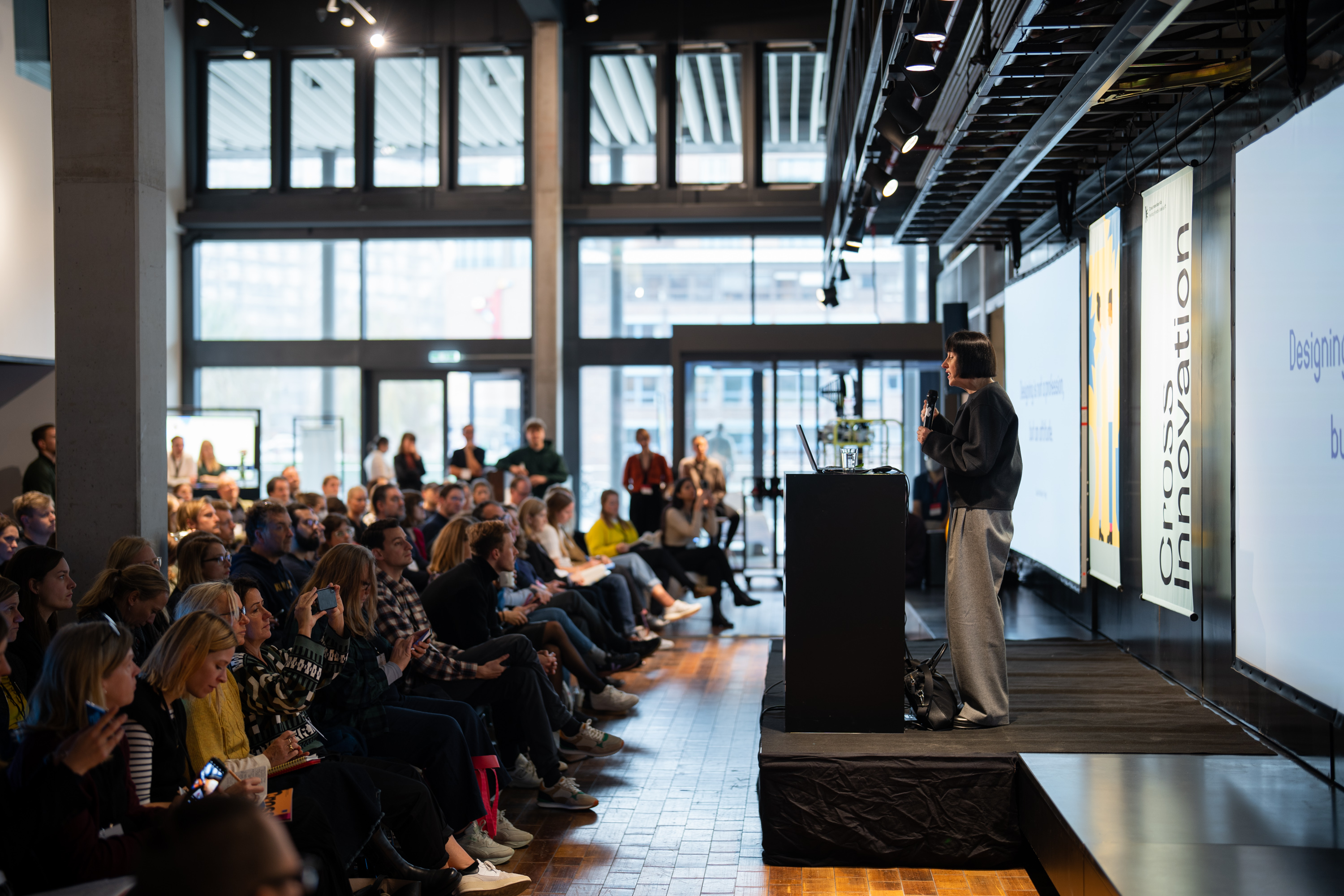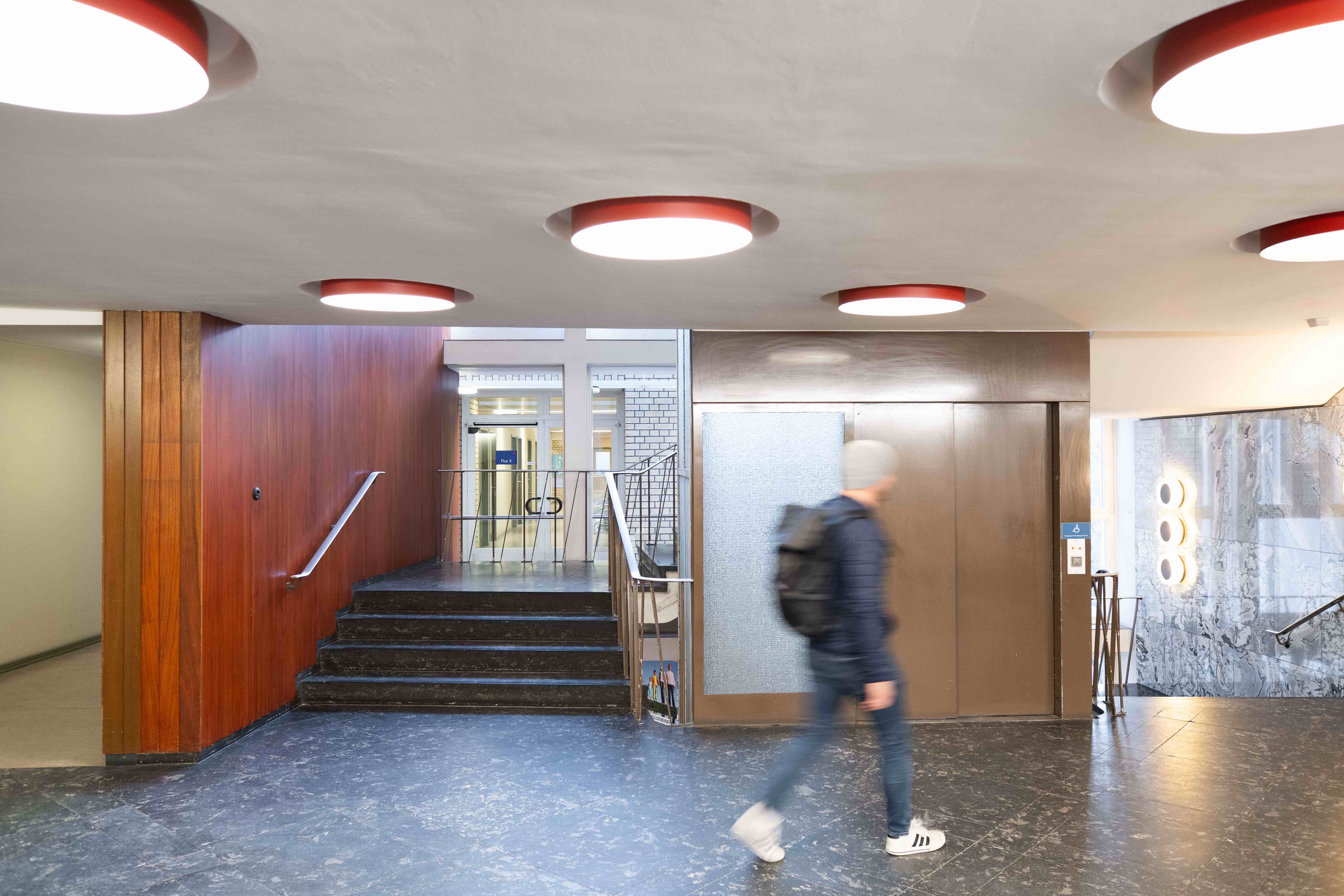But actually everyone is only interested in the price, the rest fades into the background. And then you're only booked for the finishing touches, it feels like you're only allowed to choose the colour and pattern. But we designers should be involved in such development processes much earlier. After all, we recognise certain problems at a very early stage. That's where the Cross Innovation Hub comes in: Because others take over the steering aspects, explain and moderate the creative process, we creatives can concentrate fully on the content.
Keun : From an entrepreneurial perspective, I also found this structured support very helpful. The other partner companies and I found it very helpful to see how precisely the creatives involved were selected in advance according to their individual skills and strengths so that they could really help us. The innovation process as such took a little more getting used to: the fact that you alternately open your mind completely in the individual phases so that you don't just think in your own niche, and then focus on a sub-aspect again, was a certain challenge - especially for our partners from Autoflug, who specialise in aircraft seats and suddenly had to deal with completely different parts of the cabin interior. In some cases, we had to put all our expertise aside so as not to be biased and find alternative approaches.
Mends-Cole: That's exactly the exciting thing about a creative process like this: the fact that you don't know where it will lead. It's not the destination that is defined, but the path.
Keun : Still a strange feeling. We engineers are usually given very concrete specifications and then try to find the cheapest and simplest solution by the shortest route. The Cross Innovation Lab was very different. It was about a problem that we didn't even know yet. But the strong input from outside helped there too. Other creative minds from the Cross Innovation Hub were brought in again and again. They showed us many other directions in which we could think. For example, filmmaker Claudia Rinke, who is developing the entire customer journey around the FAIRCRAFT, wrote the story about our fictional passengers Holger Kraft and Charlotte Business. Even though we are still very focused on the technical implementation, this perspective always helps us to keep the needs of the passengers in mind.
What key competences or framework conditions are needed to ensure that such development processes with different stakeholders are really successful?
Mends-Cole : Basically, more decision-makers like Christian need to take part in workshops, labs or similar formats. After all, we're talking about solutions that are truly forward-looking, that harbour real potential and that companies can really benefit from. Employees can never decide, for example, whether a product will actually be further developed and launched on the market.
Keun: But that would mean that medium-sized and large companies in particular would be excluded from such processes. It is very difficult for them to ensure that the main managers are always available for such workshops..
Mends-Cole:... but perhaps that is precisely the explanation for the slump we are currently experiencing in Germany. Innovation is actually a matter for the boss. But there are hardly any decision-makers, not even at middle management level, who take part in programmes like the Cross Innovation Hub. Other things often seem to be more important.
Keun: That's true. It takes a lot of persuasion. Perhaps it would help if companies increasingly joined together in clusters, as we have done. At FAIRCRAFT, there were seven companies that wanted to solve a similar problem, but from completely different perspectives and with completely individual ambitions. It probably takes many parties to get an innovation like this off the ground.











